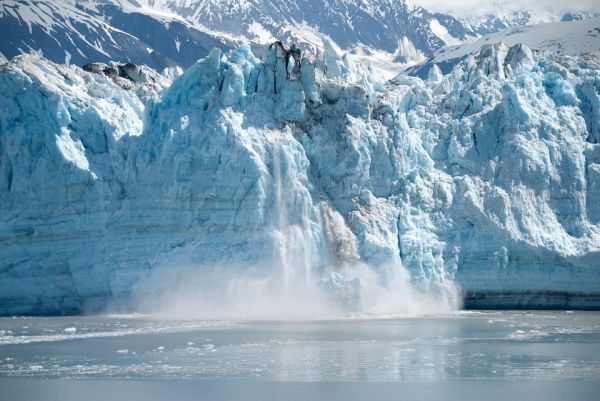A new study shows that plant materials originating in Arctic sea ice are significantly incorporated into marine food webs that are used for subsistence in local communities of the greater Bering Strait region. The study led by scientists from the University of Maryland Center for Environmental Science traced persistent biological compounds that are uniquely generated by microscopic plants in sea ice and found that the compounds are present throughout the base of the food web. The research has the potential to demonstrate the importance of sea ice ecosystems as a source of food in Arctic waters in Alaska and beyond.
“It is widely thought that the loss of sea ice habitat will have far-reaching implications for Arctic ecosystems,” said lead author Chelsea Wegner Koch, a graduate research assistant and the University of Maryland Center for Environmental Science. “As sea ice breakup occurs earlier and forms later each year, the open water period is expanding and the sources of food are shifting away from sea ice and towards greater proportions of open water production. This production in the absence of sea ice differs in the quality, quantity, and timing of delivery to the seafloor.”
Efforts to account for the proportional shifts in contributions of ice algae have been incomplete due to the lack of a specific tracer that can be definitively assigned to ice algae rather than open-water phytoplankton. The compounds reaching the seafloor that were studied are associated with food for a range of seafloor animals that in turn provide food for ecologically and culturally important organisms, such as the bearded seal, Pacific walrus, gray whale and spectacled eider that forage on the shallow sea floor.
The study, published in the journal PLOS ONE with scientists from Clark University, Université Laval, and the Scottish Association for Marine Science, used sediment samples collected in the field during research cruises in the Bering and Chukchi seas, as well as samples collected from an automated under-ice moored sediment trap that operates over the winter offshore of Wainwright on Alaska’s North Slope. Findings showed a transition to more dependence on sea ice materials in direct relation to sea ice coverage, but that the sea ice biomarkers persisted year-round and were primarily released as snow melted on the sea ice coverage present in the winter.
Read more at University of Maryland Center for Environmental Science
Photo Credit: Schmid-Reportagen via Pixabay


